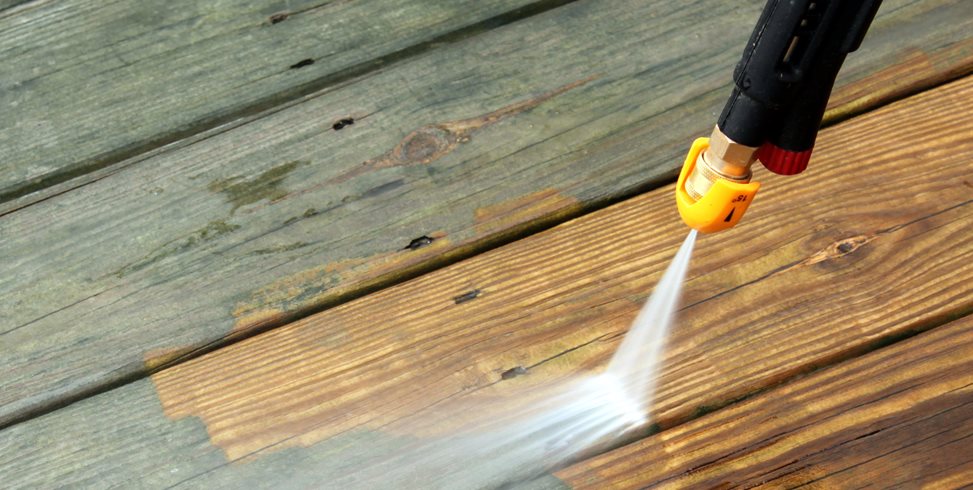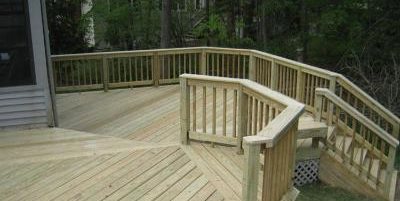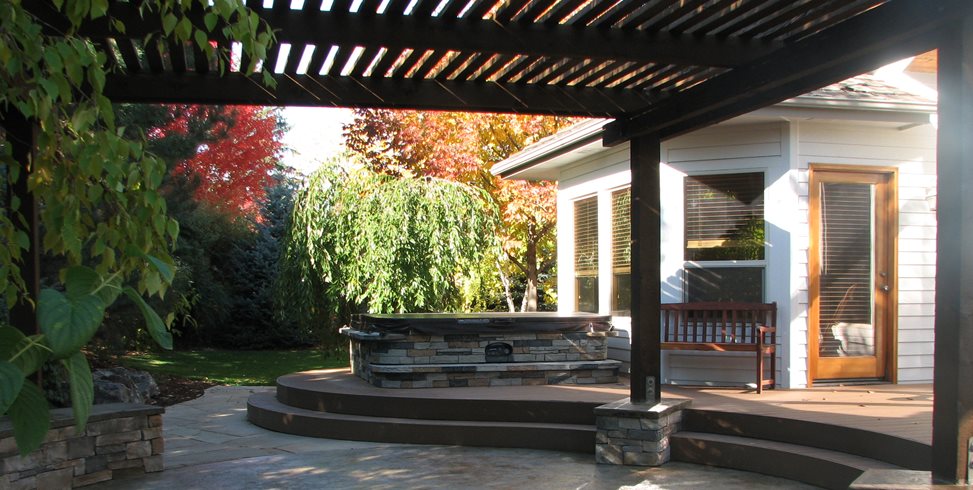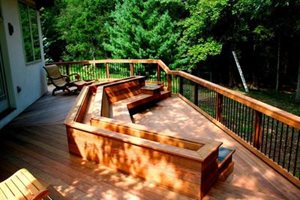Deck Repair, Refinishing & Maintenance
Professional tips for keeping your wood or composite decking looking goodOne of the main differences between decking materials is in the amount of maintenance they need, and the ease of repairing small nicks or scratches. Here, contractors share their pro tips for keeping your deck looking as good as the day it was installed.
Common Repairs
Dings, scratches and stains are the most common things you’ll need to repair on your deck, and ease of repair varies widely depending on the materials you use. Here’s how to repair simple cosmetic issues on each type of decking material.
Pressure-treated wood, cedar or redwood:
— These types of wood are remarkably easy to work with when you get a scratch or gouge on the surface. All you need to do is sand the board until the stain, scratch or gouge disappears and then re-stain, paint or seal the deck to give it a finished look again.Tropical hardwoods such as ipe:
—Tropical hardwoods are so dense that they rarely have significant scratching issues. However, “the wood reacts with any metals that aren’t stainless steel, so if your patio furniture doesn’t have a protective cushion on the foot or if other types of metal rest against the deck surface, the wood can develop unsightly black oxidation stains,” says Dan Ivancic of Advantage Trim & Lumber Co. in Buffalo, NY. Luckily, “pressure washing removes most stains,” he says.Composite:
—Many of the older composite materials have a brushed surface which makes it easy to sand out any scratches. However, these materials do not resist stains as well as newer capped composite materials, so if you have a stain that won’t come out with either soap and water or a specialized solution such as Corte*Clean Composite Cleaner, your last option is to flip over the board to the other side, or replace the board.Capped composite:
— Many of the newer capped composite decking materials are exceptionally resistant to scratches and stains, so this isn’t an issue you should have to deal with often. However, dropping a heavy item such as the claw head of a hammer can create a gouge, and dropping anything that’s very hot can also mar the surface by melting it. TimberTech, a composite manufacturer, recommends you use the tip of a clothing iron on small scratches, to re-melt the plastic and smooth the surface. If more serious intervention is needed, board replacement is next, because most capped composite boards are one-sided.How to Maintain a Deck
It’s important to regularly maintain your deck, not only for aesthetic reasons, but also to keep it structurally sound and free of slippery mold or algae. Most types of wood decking require cleaning and either staining or oiling every one to two years, while composite decking requires little care beyond cleaning to continue looking sharp. The cleaning and care process is different for each material.
Pressure-treated wood, cedar or redwood
—These types of wood decks require the most maintenance. Baron Biedenweg of Archadeck of Fort Wayne in Ft. Wayne, IN recommends cleaning, lightly sanding, and staining or sealing every one to two years. It’s also important not to let leaves or other debris pile up on your deck, since that can make deck boards slippery and encourage rot.Tropical hardwoods such as ipe
—While ipe and other tropical hardwoods are dense and strong, they still need regular maintenance just like other types of wood. Ivancic recommends pressure washing, and then oiling the wood yearly to keep the color bright. There are UV-inhibiting oils available to use on your tropical hardwood deck that act as a sunscreen for the wood to keep the color bright. If you don’t mind the gray look of weathered ipe, then you don’t need to oil it at all; your deck will last just as long without it. Water seal is completely unnecessary- Pro Tip: Planning concrete or asphalt paved spaces for kids to play? Keep the expansion joints few and narrow. Avoid rough surfaces like exposed aggregate. Keep it smooth for safety of rollerskates, roller blades, Razor scooters and skateboards.
Composite
—With traditional brushed composite materials, the maintenance consists of keeping your deck swept and free of debris, and using a cleaner once a year in either spring or fall. TimberTech recommends Corte*Clean Composite Cleaner for their Traditions line of composite decking. Corte*Clean is an environmentally friendly cleaner which is available at big-box stores and online.Capped composite
—Newer capped composite products such as the TimberTech XLM line are extremely low-maintenance. Just hose down the deck as needed and spot clean occasionally with soap and water.Related Reading

 Backyards
Backyards
 Front Yards
Front Yards








